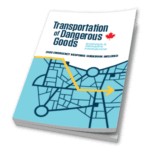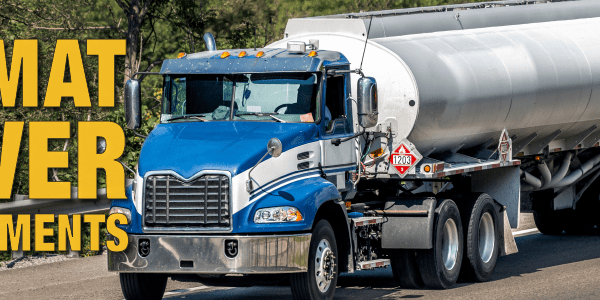Hello, everyone! We’re back with a blog that we hope will keep you updated on what’s happening with the Canadian TDG regulations.
This blog will discuss a new Transport Canada (TC) approach to the transportation of dangerous goods (TDG). They call it: TDG transformation.
What does this transformation involve? Well, according to TC, it is essential to keep its team efficient and effective in their TDG enforcement mandate. This makes our TDG regulations up to date, reliable, and, above all, in line with global regulations.
This involves a number of key elements, such as:
- Better information management using information technology
- Modernizing their practices based on ongoing and upcoming TDG changes
- Innovating alongside the industry
- Improving its capacity to monitor safe and secure transportation
- Modernizing their database
- Improving analysis
- Optimizing inspections based on risk assessment
To achieve this, TC has developed a roadmap and strategy aligned with five pillars:
- data-driven decisions: ensuring the modernization of TDG information systems to support risk-based decision making and monitoring (e.g., data-based monitoring and data sharing with provincial partners);
- sensible programs and policies: adopting innovative approaches to modernize the way the TDG team delivers services (e.g., the Administrative Monetary Penalty System);
- a modern and inclusive workforce: using virtual tools and development programs (e.g., paperless office and remote inspections);
- innovation regarding services: service improvement through modernization of tariff structures (e.g., modernization of TDG fees);
- transparency and public confidence: promoting collaboration and information sharing among industry, provincial, federal, and Aboriginal partners to foster greater awareness and compliance (e.g., security agreements with industry).
This roadmap is intended to be flexible, intelligent, and reliable. It must be proactive, anticipatory, and flexible to respond quickly to the needs of the TDG industry. Intelligent because it will use relevant data to make risk-based decisions. Reliable, of course, to maintain their credibility and to remain open, transparent, and accountable to stakeholders.
This roadmap contains initiatives to encourage innovation, support the economy, and continue to prioritize public safety. Here are examples of some of the initiatives:
- a policy framework for a client identification database, which was recently completed and will allow us to identify our regulated community;
- a competency-based assessment and training standard for Part 6 – Training, was overwhelmingly approved by the Canadian General Standards Board (CGSB) committee;
- a pilot project for remote inspections – an initiative that was accelerated to maintain oversight during the COVID-19 pandemic; it should be noted that this will not become the new way of conducting inspections for TC but rather was intended to alleviate the problem of in-person inspections.
- a surface strategy for Aboriginal community engagement, being developed with TC Rail Safety colleagues, to improve communications with Aboriginal communities and to address concerns raised about the transportation of dangerous goods by rail through or near communities;
- a reverse logistics policy, a TDG grants, and contributions program and safety agreements with industry (a voluntary audit program) all are under development.
Moving forward, TC has established a consultation committee for the electronic shipping document: Evolving regulations on electronic shipping documents. This exciting pilot project will examine the feasibility and effectiveness of allowing electronic shipping documents in the TDG Regulations.
What is an evolving regulation? The idea of evolving regulation originated in the UK. It serves as a testing ground for regulatory changes and will help us “get it right” before we make any real changes to the regulations. They must, in principle, test the idea before concluding that it will be successful and of real benefit to safety or the potential impact on emergency response. It is clear that Canada and the United States need to come to an agreement on this issue in order to build a better relationship and reciprocity between the two countries.
TC is also involved in the continuous improvement of CANUTEC. As part of CANUTEC’s Continuous Improvement initiative, a third-party contractor conducted a SWOT (Strengths, Weaknesses, Opportunities, and Threats) organizational assessment of its emergency services in the winter of 2018. The evaluation included online surveys and telephone interviews with key stakeholders, such as: emergency response plan holders, railroads, first responder training schools, and volunteer firefighters. Subsequently, stakeholders reported that they were satisfied and had a good opinion of CANUTEC staff and services.
The roadmap addresses the risks of lithium batteries in transport by considering a new performance standard for the packaging of lithium batteries shipped by air.
In 2016, regulators, pilots, packaging manufacturers, testing laboratories, and transporters began working with “SAE International” to create a performance standard for lithium battery packaging. The SAE G-27 committee is leading the development of this standard and is addressing packaging safety and testing standards for how packaging can protect against the hazard of air transport of lithium batteries. This standard should apply to UN numbers: UN3480 Lithium-ion batteries and UN3090 Lithium metal batteries.
The roadmap looks at the normal conditions of air transport as these are very different from other modes of transport. The “normal conditions of transport” are divided into four specific aspects: temperature variations, pressure variations, vibrations, and humidity variations. These conditions have an effect on dangerous goods as well as on packaging types, and some additional requirements applicable to air transport have to be evaluated always with the aim of ensuring better safety in transport.
Another important element of the transformation is risk assessment. TC is taking a closer look at a long-standing problem and would like to ensure that its frequency is reduced. The problem is dangerous goods incorrectly declared at sea and air ports of entry. This is to better understand the issue of dangerous goods entering Canadian air and sea ports without being properly declared by foreign shippers. When dangerous goods are misdeclared or not declared, they may not be packaged or stored safely. This can lead to explosions or fires in warehouses or at sea, which can cause significant property damage, injury, or loss of life. The evaluation was launched in November 2017.
A report based on the findings of these sessions was completed in May 2019 and recommended more data collection, outreach, and education sessions with stakeholders and increased cooperation with the Canada Border Services Agency. An action plan for the key recommendations is being developed.
In conclusion, it is clear that TC is taking, as they say, the “bull by the horns” to achieve its ends. However, it is important to recognize that they take transportation safety to heart and are putting in place initiatives that we hope will meet or exceed their expectations.
Don’t forget that ICC’s team of regulatory experts is always here for you if you have any questions about our blog posts or any other TDG-related issues. Whether it involves our multiple products, services, or training.
Stay up to date and sign up for our newsletter!
We have all the products, services and training you need to ensure your staff is properly trained and informed.
 Canadian TDG Publications |
 Lithium Battery Shipping Kits |
 Training Courses |






